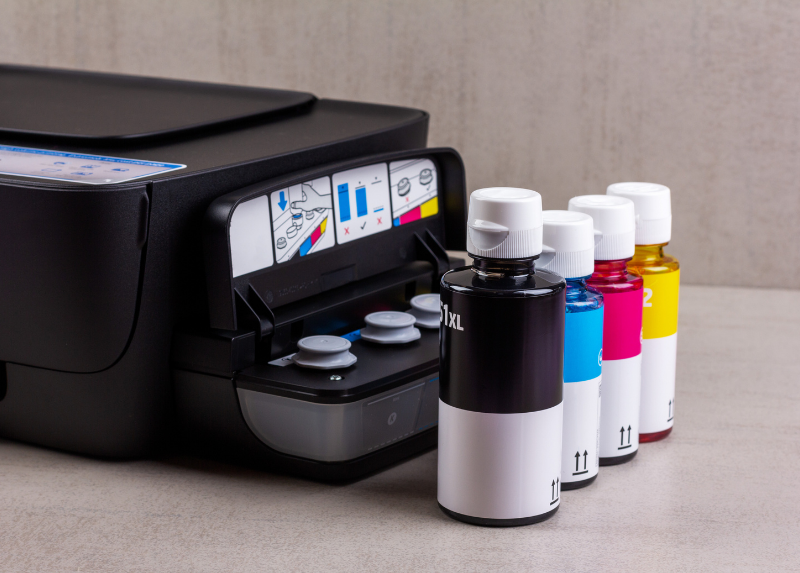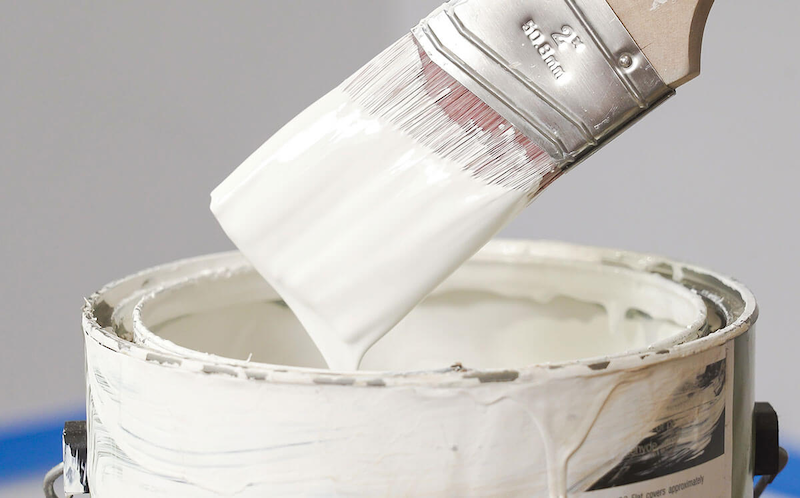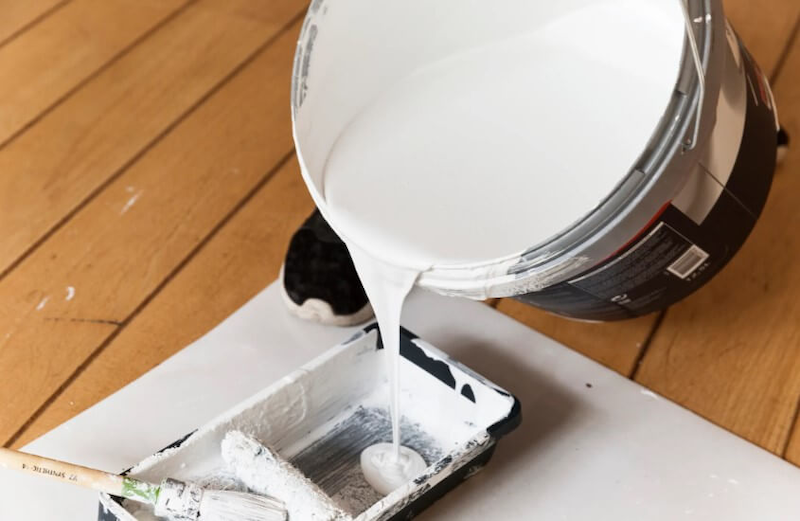TOP 10 specialized PU paint remover on wood | K-Chem
06/06/2025
|
Industry news
PU paint remover on wood is an essential solution in the process of refurbishing, restoring, or reusing previously coated wooden surfaces. Due to the strong adhesion and durability of PU paint, choosing the right specialized paint remover can help save time and effort while ensuring the wood surface remains undamaged. In this article, we will compile the TOP 10 most effective and trusted PU paint removers for wood surfaces available today, helping you easily find the product that best suits your needs. Let’s explore together!
Oil-based chemicals: Methylene Chloride (Dichloromethane)
Description:
The main ingredient in many commercial paint stripping solutions. This is a strong chemical, effective with oil-based PU paint.
How to use:
- Sweep a thick layer (about 1-2 mm) onto the wood surface with a brush.
- Wait 10-20 minutes for the PU paint to soften and peel off.
- Use a paint scraper to remove the paint layer, then wipe clean with a cloth soaked in solvent (such as acetone) or soapy water.
Advantages:
- Removes up to 95-100% of PU paint, even thick or long-lasting layers.
- Suitable for large, complex wood surfaces.
- Fast acting time.
Disadvantages:
- Very toxic, irritating to the skin, eyes, and respiratory tract. Need nitrile gloves, anti-toxic masks, and work in a well-ventilated area.
- May damage wood’s protective coating if left too long.
- Not environmentally friendly (high VOC).
Mixing ratio:
- No need to dilute, use directly from commercial product.
- If less strength is needed (for sensitive wood), dilute with acetone in a 1:1 ratio (1 part Methylene Chloride : 1 part acetone). However, this reduces the cleaning effect.
Note: Check the product label carefully, as some contain added toluene or methanol, increasing toxicity.
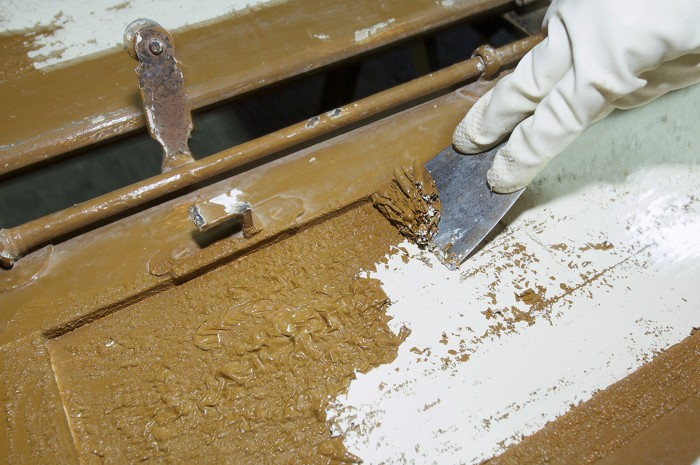
(Source: Collected Data)
Oil-based chemicals: Acetone
Description:
Strong solvent, easy to buy (usually sold in chemical stores or supermarkets as a pure solution).
How to use:
- Soak acetone in a soft cloth or cotton, rub directly on the PU paint surface.
- Wait 2-5 minutes, then use a razor or clean cloth to wipe it off.
- Wipe again with clean water to remove residue.
Advantages:
- Easy to find, cheap.
- Effective with thin or new PU paint.
- Evaporates quickly, leaving little residue.
Disadvantages:
- Low efficiency with thick or long-lasting PU paint.
- Acrid smell, easy to cause irritation if inhaled.
- Can dry or dull the wood surface if rubbed too hard.
Mixing ratio:
- Use pure for best results.
- If you need to reduce the strength, mix with water in a 2:1 ratio (2 parts acetone: 1 part water), but the effect will be significantly reduced. Note: Acetone is flammable, keep away from heat.
Note: Acetone is highly flammable; keep it away from heat sources.

(Source: Collected Data)
Oil-based chemicals: Xylene (Aromatic gasoline)
Description:
Also known as “Japanese gasoline”, is a strong organic solvent, popular in PU paint removal.
How to use:
- Soak xylene in a soft cloth, rub on the PU paint surface.
- Wait 1-3 minutes, then wipe hard or scrape the paint with a knife.
- Wipe clean with a soapy cloth to reduce the smell.
Advantages:
- Remove up to 90-95% of PU paint, especially effective with thin paint layers.
- Cheap
- Easy to operate, no need to wait long.
Disadvantages:
- Very pungent, toxic smell, need mask and gloves.
- Can damage the wood surface if left to soak for too long.
- Volatile, need to operate quickly.
Mixing ratio:
- Use pure for maximum effectiveness.
- If combined with acetone to increase effectiveness on thick PU paint, mix in a 1:1 ratio (1 part xylene : 1 part acetone). This mixture is stronger but more toxic.
Note: Work in a well-ventilated area, away from sparks or flames.
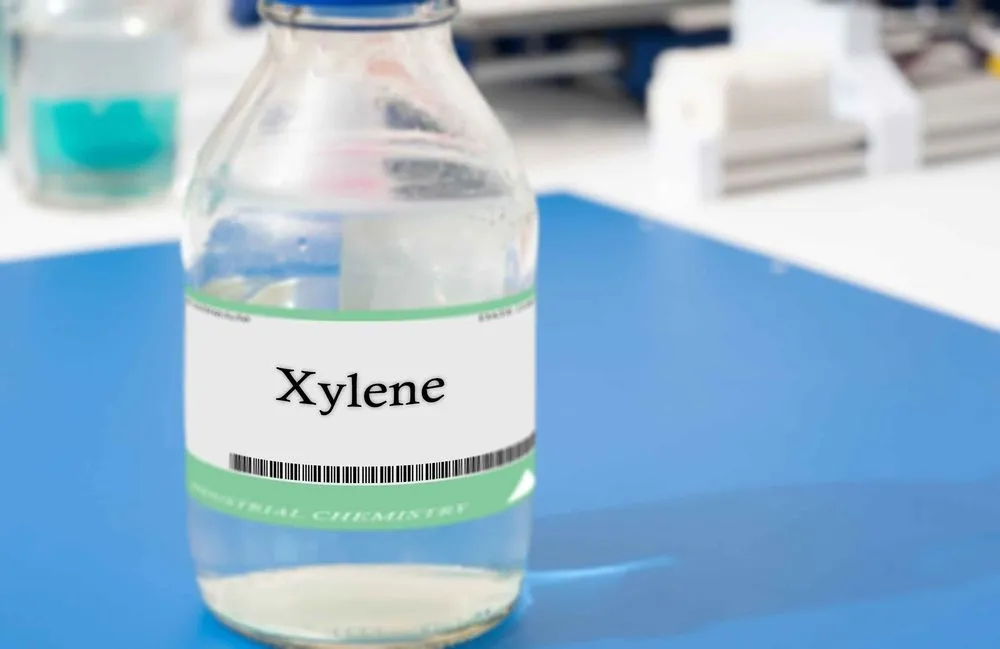
(Source: Collected Data)
Water-based chemicals: Sodium Hydroxide (Caustic Soda)
Description:
A strong alkaline chemical, often used in water-based paint strippers.
How to use:
- Mix sodium hydroxide solution with water in a ratio of 1:10 (1 part caustic soda: 10 parts water) to create a safe cleaning solution.
- Sweep the solution onto the wood surface, wait 30-60 minutes.
- Scrape the soft paint with a knife, then rinse with water or diluted vinegar (to neutralize the alkali).
Advantages:
- Less toxic than oil-based chemicals, lighter odor.
- Environmentally friendly if handled properly.
- Suitable for sensitive wood, less damaging to the surface.
Disadvantages:
- Less effective with oil-based PU paint or thick layers.
- Requires a long waiting time, laborious operation.
- May leave alkaline residue if not washed thoroughly.
Mixing ratio:
- Standard ratio: 1:10 with water (eg: 100g of caustic soda dissolved in 1 liter of water).
- If you need to increase the effectiveness, you can reduce the ratio to 1:8, but be careful because strong alkaline solutions can corrode wood.
Note: Sodium hydroxide is corrosive, gloves and goggles are required. Neutralize with vinegar after stripping.
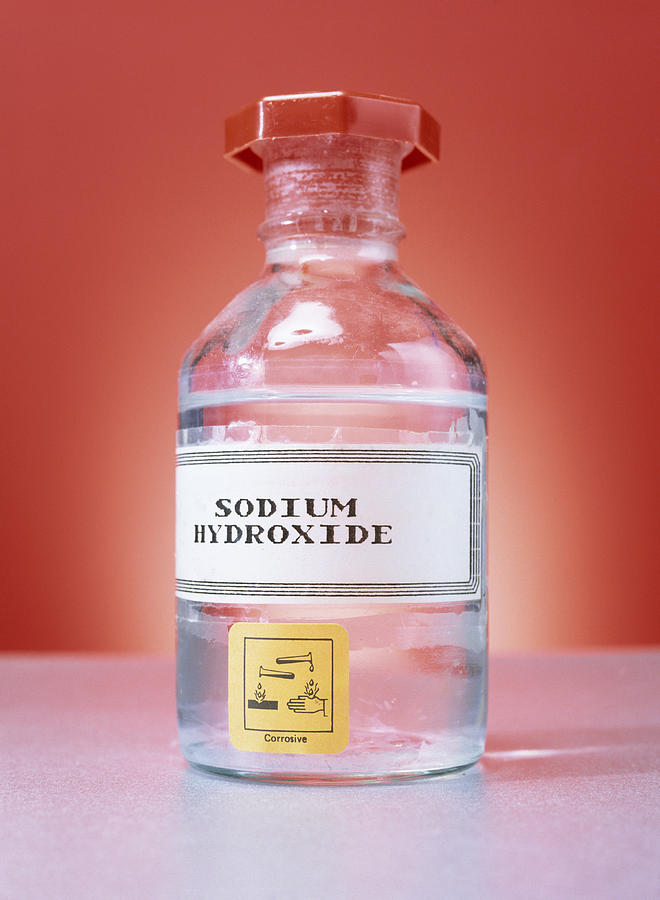
(Image Source: Collected Data)
Gel paint stripper: Citri-Strip or similar
Description:
Commercial gel product, usually containing N-Methyl-2-Pyrrolidone (NMP) or Benzyl Alcohol, safer than Methylene Chloride.
How to use:
- Apply a thick layer of gel (2-3 mm) to the wood surface.
- Wait 15-30 minutes (according to product instructions), then scrape the paint off with a knife.
- Wipe clean with a damp cloth or mild solvent.
Advantages:
- Good adhesion, suitable for concave and convex surfaces or hidden corners.
- Less toxic than Methylene Chloride, milder odor.
- High efficiency, can remove thick PU paint.
Disadvantages:
- High price
- Still need protective gear because it can cause skin irritation.
- Need to clean thoroughly to avoid gel residue.
Mixing ratio:
- No need to mix, use directly from the product.
- If you want to dilute it for easier sweeping, mix it with water in a ratio of 4:1 (4 parts gel: 1 part water), but the efficiency is reduced.
Note: Check the product label to make sure it does not contain banned chemicals (such as NMP in some countries).
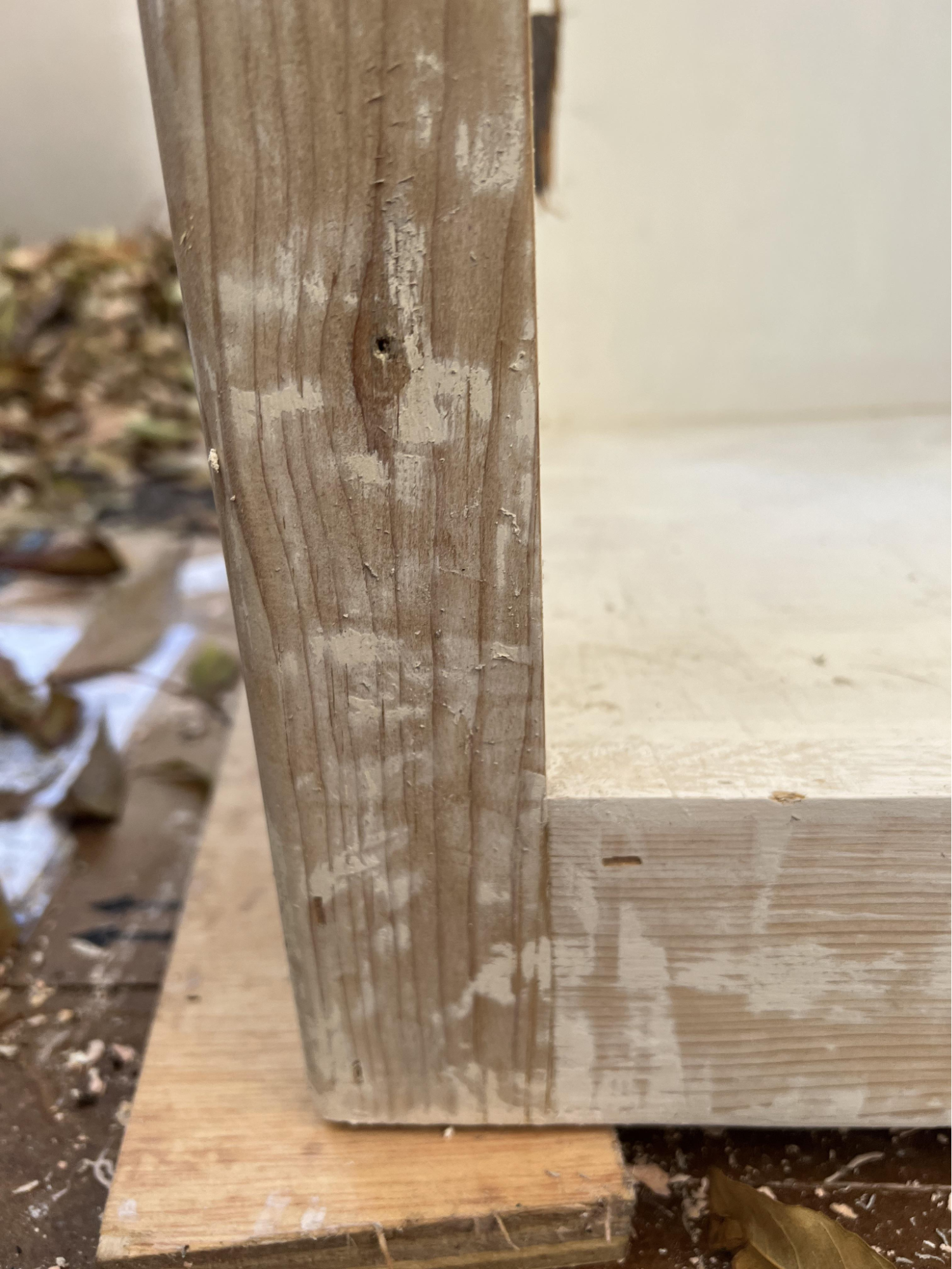
(Source: Collected Data)
Natural method: Vinegar (Acetic Acid)
Description:
White vinegar or industrial vinegar (5-10% acetic acid), suitable for thin PU paint stains.
How to use:
- Mix vinegar with water in a ratio of 1:3 (1 part vinegar: 3 parts water).
- Soak the solution in a soft cloth, rub on the paint surface.
- Wait 5-10 minutes, then wipe clean with a cloth or strong tea.
Advantages:
- Absolutely safe, non-toxic, cheap.
- Does not damage the wood surface.
- Easy to find, environmentally friendly.
Disadvantages:
- Only effective with thin, new PU paint.
- Need to repeat many times, time-consuming.
- Mixing ratio:
- Standard ratio: 1:3 with water.
- If using industrial vinegar (10% acid), you can mix 1:2 to increase the effectiveness, but test on a small area first.
Note: Not effective with thick PU paint, should be combined with mechanical sanding (sandpaper).
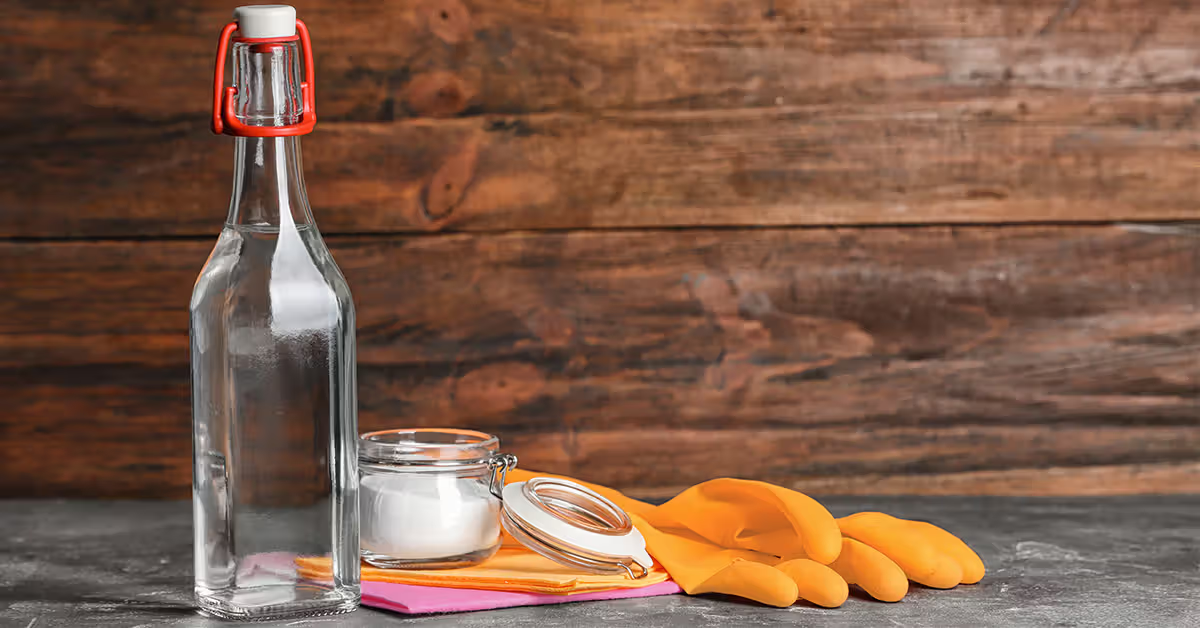
(Source: Collected Data)
Natural method: Cooking oil and beeswax
Description:
Natural mixture, used to remove thin PU paint and polish wood.
How to use:
- Mix cooking oil (any vegetable oil) with beeswax in a ratio of 2:1 (2 parts oil: 1 part beeswax).
- Boil the wax until it is completely melted, let it cool slightly.
- Rub the mixture onto the paint surface with a soft cloth, wait 10-15 minutes, then wipe clean with warm water.
Advantages:
- Safe, non-toxic, polishes wood.
- Easy to find ingredients.
- Environmentally friendly.
Disadvantages:
- Low efficiency, only suitable for small paint stains.
- Time consuming to prepare and operate.
Mixing ratio:
- Standard ratio: 2:1 (2 parts cooking oil: 1 part beeswax).
- If you want a thicker mixture, increase the beeswax to 1:1, but it will be harder to scrub.
Note: Suitable for decorative wood or small furniture.

PU Paint Remover for Wood Surface – Butyl Acetate-Based Solvent
Description:
This PU paint remover is a butyl acetate-based organic solvent with high dissolving power. It effectively removes PU coatings thanks to its medium evaporation rate and excellent penetration ability.
How to use:
- Use a brush or applicator to apply Butyl Acetate evenly over the PU-painted wood surface.
- Wait about 5–15 minutes for the solvent to penetrate and soften the paint layer.
- Use a scraper, brush, or soft cloth to remove the loosened paint.
Advantages:
- Moderate evaporation helps soften paint effectively.
- Easy to use and suitable for various scales of application.
- Works well on thick, long-standing PU coatings with strong adhesion.
Disadvantages:
- Strong odor and flammable in high-temperature areas.
- May cause skin irritation upon direct contact.
- Excessive use may dull or alter the color of the wood surface.
Mixing Ratio:
- Mix at a 4:1 ratio (4 parts Butyl Acetate to 1 part xylene or slow-evaporating solvent) to slow down evaporation.
- For maximum stripping effectiveness, use 100% pure Butyl Acetate without dilution.
Note: Avoid over-dilution. Adjust the mixing ratio based on weather conditions, paint thickness, and the surface area to be cleaned.

(Source: Collected Data)
PU Paint Remover for Wood – N-Methyl-2-pyrrolidone (NMP)-Based Solvent
Description:
A powerful organic solvent, N-Methyl-2-pyrrolidone (NMP) effectively dissolves various resins and industrial paints.
How to use:
- Apply the PU paint remover evenly using a brush or applicator.
- Wait approximately 15–30 minutes for the solvent to penetrate and soften the paint layer.
- Use a scraper or soft wire brush to remove the loosened paint.
Advantages:
- Low evaporation rate, making it safer than many other solvents.
- Low odor, ideal for use in enclosed or indoor environments.
- Non-damaging to wood surfaces and highly effective on many types of PU coatings.
Disadvantages:
- Longer working time compared to other solvents.
- More expensive than traditional paint removers.
- May cause skin irritation with prolonged contact.
Mixing Ratio:
- Use at 100% concentration for optimal PU paint removal, especially on thick or aged coatings.
- A 3:1 ratio (3 parts NMP to 1 part neutral solvent) can be used to slow down the solvent’s effect on the wood surface.
Note:
- Always wear gloves, a mask, and protective eyewear during use.
- Avoid contact with soft plastic materials.
- Store in specialized plastic containers in a cool, dry place.
Important Notes
- Safety: Always wear nitrile gloves, face mask, and safety glasses when working with Methylene Chloride, Acetone, Xylene, or Sodium Hydroxide.
- Test: Test the chemical on a small area first to avoid damaging the wood.
- Waste disposal: Pour excess chemicals into a separate container, do not pour down the drain. Contact a chemical waste disposal company if using large quantities.
- Ventilation: Work outdoors or in a well-ventilated area, especially with oil-based chemicals.
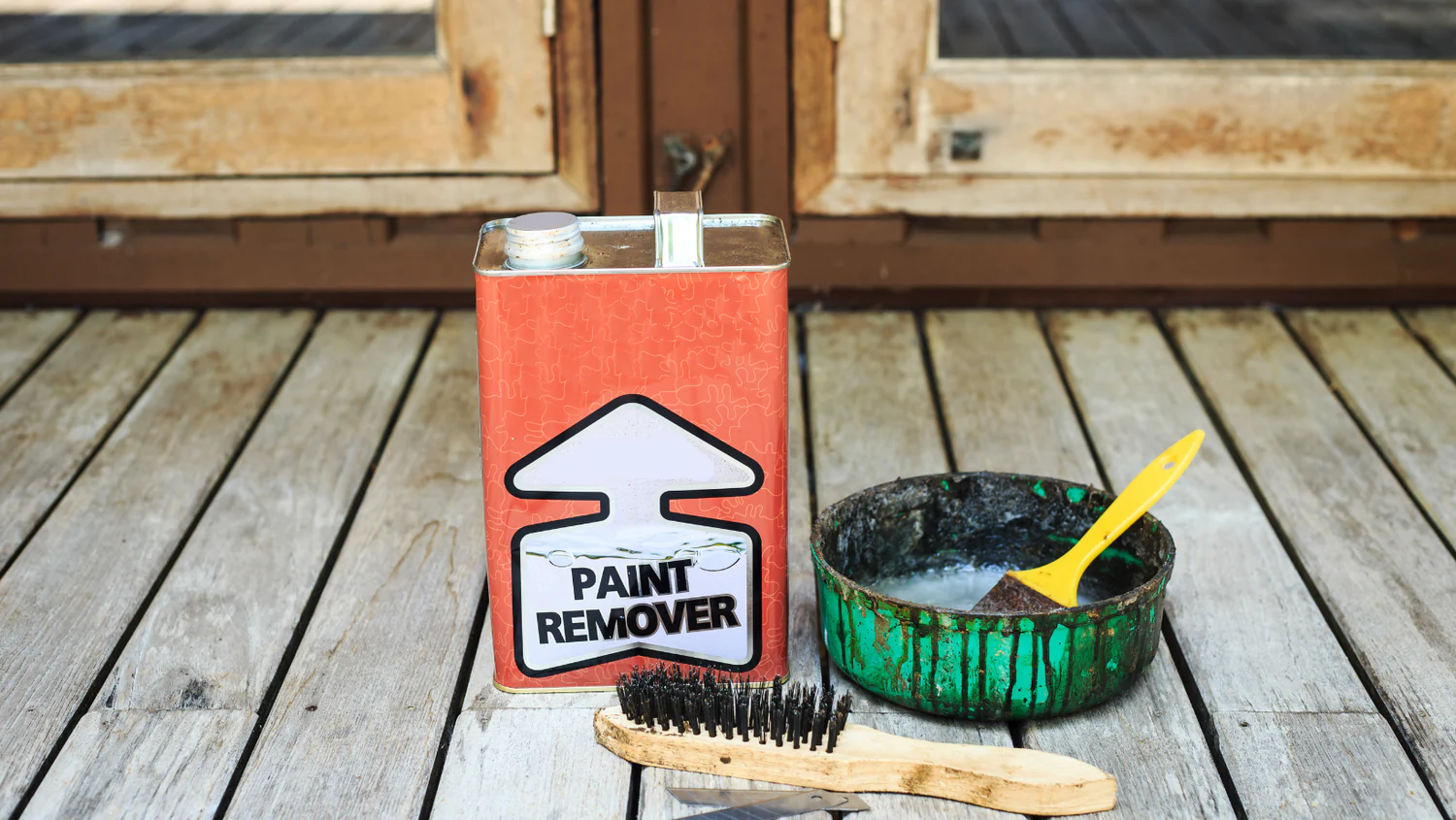
(Source: Collected Data)
Conclusion
PU paint remover for wood is an indispensable solution in the processes of refurbishing, repairing, or recycling wooden furniture. Depending on your specific needs, the type of paint to be removed, and working conditions, you can choose the most suitable solvent from the top 10 recommended products above. Be sure to follow the usage instructions and safety precautions to achieve the best results while ensuring both your health and the integrity of the wood surface.



